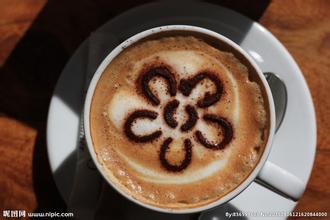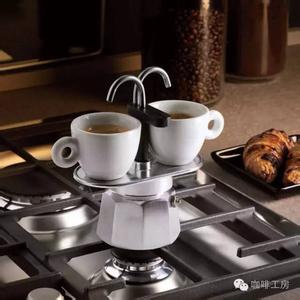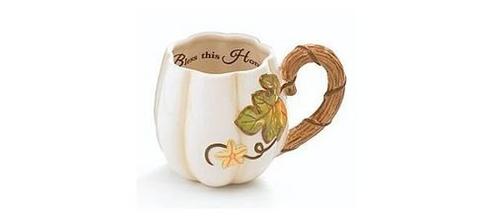The flavor description of Santa Cruz Manor Coffee with a very balanced and refreshing taste introduces the price of varieties in the producing area.
China Coffee Network
Port Guayaquil is the largest seaport in Ecuador. It faces the Pacific Ocean and backs against Mount Santa Ana. The nearby island of Pune serves as a natural barrier to protect the harbour from storms. There is a wharf in the south, which is more than 900 meters long. Ships from different parts of the world flying various flags are moored in the harbor. The port railway leads to the capital Quito, and highways connect Quito with other cities in the country. Bananas, cocoa, coffee, cotton and other products from all over the country are collected and distributed here. Guayaquil has also played an important role in the history of friendly exchanges between the peoples of China and Ecuador. As early as the 18th century, Chinese clothing, textiles and other goods were shipped to Ecuadorian cities through Guayaquil. In August 1978, the Chinese cargo ship Jialing River arrived here for the first time. Most of the import and export goods of the two countries are the Ecuadorian national emblem transshipped through Guayaquil. Ecuador's national emblem was launched in 1900, similar to the national emblem of Colombia. A ferocious "American Condor" vulture stands above the national emblem. It is the national bird of Ecuador, symbolizing sovereignty and independence. The design of Ecuador's national emblem is unique, which fully shows the amorous feelings of the country: the snow-capped Mount Chimborazo, Ecuador's highest peak, stands towering on the banks of the Pacific Ocean against the blue sky, with verdant trees at the foot of the mountain. a large river winds out from the depths of the mountains and gradually merges into the blue sea. The earliest steam ocean-going ship in South America, which Ecuadorians are proud of, is moored at the mouth of the sea. Above the snowy peak, the May Sun, a symbol of Mayan culture, shines brightly. The "twelve officials of the zodiac" marked with the months of March, April, May and June on both sides of the sun represent the difficult years of the Ecuadorian people defending their country against foreign invasions in 1845. The bar at the bottom represents the state institutions of the Republic and symbolizes justice and authority.
The Arabian Coffee Tree was first introduced to Ecuador (Ecuador) in 1952 and its coffee is of good quality, especially the coffee harvested in early June. Ecuadorian coffee beans can be divided into two varieties: Galapagos and Gigante, both of which have the characteristics of large granules and heavy weight. Ecuadorian coffee can be divided into first class (No.1) and super excellent (ExtraSuperior) according to its quality. They are mainly exported to the Nordic countries of Scandinavia.
The main problem facing coffee producers is their efforts to maintain stable quality. The coffee here is generally well-balanced and refreshing, with a unique aroma.
Ecuador is one of the few countries in South America that produces both Arabica coffee and Robbins coffee. However, as the land suitable for Arabica coffee trees is decreasing, the production of Robbins coffee is gradually increasing. The best Arabica coffee comes from the Andes, especially the Chanchagu Valley (ChanchamgoValley), which is divided into two mountains, extending from south to north to central Ecuador, the highest Arabica coffee plantation in the world. Since the coffee tree was first introduced into Ecuador in 1875, the quality of its coffee has remained unchanged for 100 years, especially the coffee harvested in early June every year, which is called "the best coffee in the world". Ecuadorian coffee beans are divided into Galapagos and Segante, both of which have large particles and heavy weight. In particular, the unique geographical conditions of the Galapagos Islands give coffee beans excellent genes that are superior to those of other producing areas, and its high quality comes from the absence of any chemical agents when growing. As Ecuador's land suitable for Arabica coffee trees is gradually decreasing, Galapagos coffee is even more valuable as the world dessert champion in 1995 and the European dessert champion in 2000, Mr. Marcolini's philosophy of success is absolute respect and dedication to ingredients. Ten years ago, he decided to be a great chocolate maker, searching for the best quality cocoa beans from all over the world, finding the roots of chocolate and releasing the true taste of chocolate. All the products sold in Marcolini stores, whether they are chocolates, almond cakes, jam and caramel, are made in Marcolini Workshop and are pure in taste and come from the original cocoa beans. The Marcolini brand has 14 cocoa beans from different regions, led by Ecuador, followed by Brazil, Cuba and so on.

Important Notice :
前街咖啡 FrontStreet Coffee has moved to new addredd:
FrontStreet Coffee Address: 315,Donghua East Road,GuangZhou
Tel:020 38364473
- Prev

Bright and lively Fruit Acid Jadeite Manor Coffee Variety and Flavor description
Panamanian coffee is famous for the rosy summer of the Emerald Manor, which is also famous in the Boquete region of its Chiriqui province. Poquet Boquete is a town of Chiriqui in the province of Riki. It is located near the border between Panama and Costa Rica, near the famous Baru Baru volcano.
- Next

Description of Coffee Flavor in Hasunda Coffee Garden introduction to boutique coffee beans in manor area
Ecuador is located in South America, the equatorial line runs through the country, so Ecuador is also known as the equatorial country. Ecuador's superior geographical location, fertile soil and special climatic conditions have created a superior natural environment for coffee cultivation in the country. Ecuador is one of the few countries in the world that can produce both Arabica and Robusta coffee beans. Speaking of Ecuador,
Related
- Does Rose Summer choose Blue, Green or Red? Detailed explanation of Rose Summer Coffee plots and Classification in Panamanian Jade Manor
- What is the difference between the origin, producing area, processing plant, cooperative and manor of coffee beans?
- How fine does the espresso powder fit? how to grind the espresso?
- Sca coffee roasting degree color card coffee roasting degree 8 roasting color values what do you mean?
- The practice of lattes: how to make lattes at home
- Introduction to Indonesian Fine Coffee beans-- Java Coffee producing area of Indonesian Arabica Coffee
- How much will the flavor of light and medium roasted rose summer be expressed? What baking level is rose summer suitable for?
- Introduction to the characteristics of washing, sun-drying or wet-planing coffee commonly used in Mantenin, Indonesia
- Price characteristics of Arabica Coffee Bean Starbucks introduction to Manning Coffee Bean Taste producing area Variety Manor
- What is the authentic Yega flavor? What are the flavor characteristics of the really excellent Yejasuffi coffee beans?

